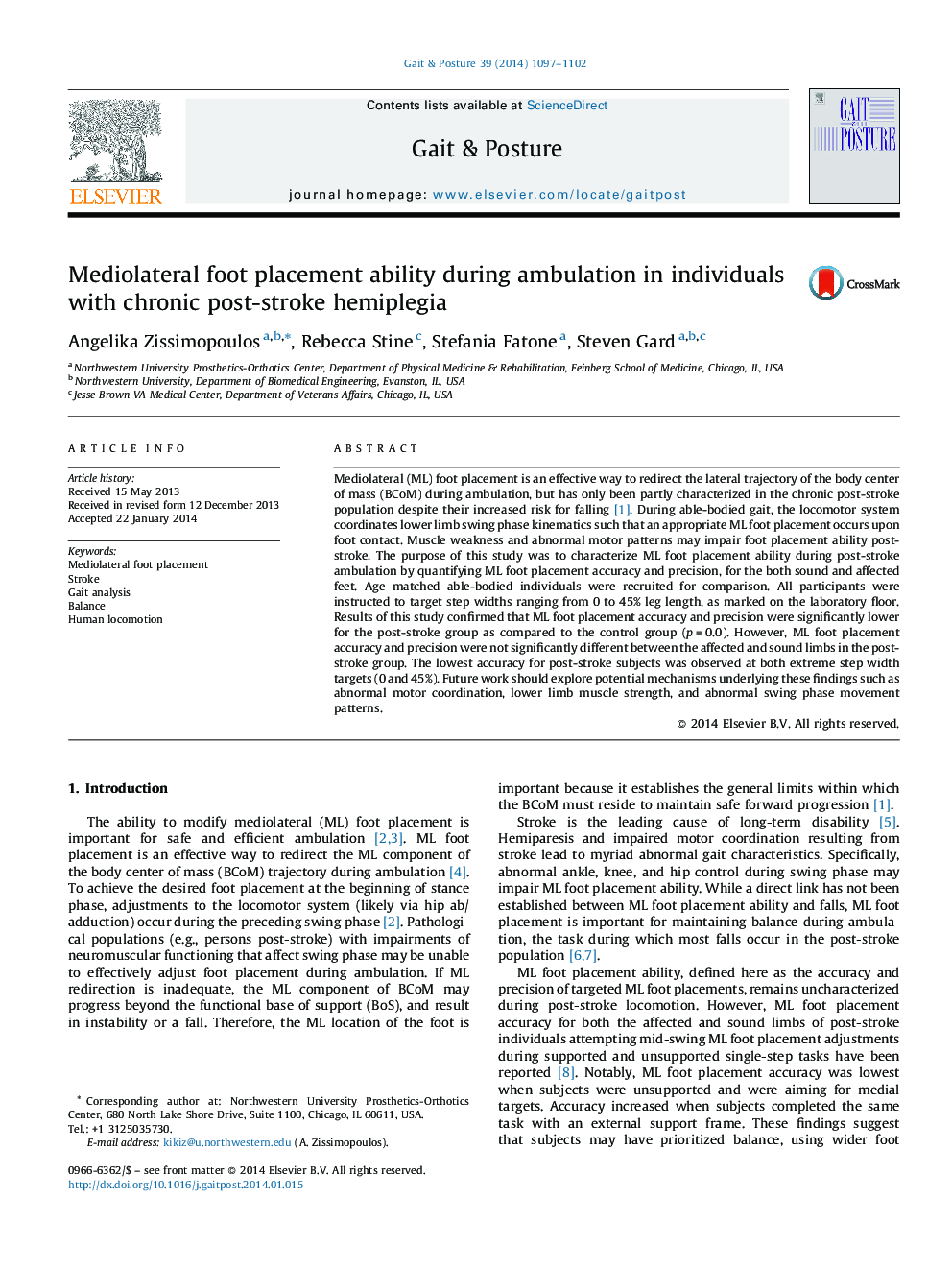| کد مقاله | کد نشریه | سال انتشار | مقاله انگلیسی | نسخه تمام متن |
|---|---|---|---|---|
| 6206308 | 1265643 | 2014 | 6 صفحه PDF | دانلود رایگان |
- ML foot placement is important for safe and efficient ambulation.
- We quantified ML foot placement accuracy during ambulation in persons post-stroke.
- Post-stroke, ML foot placement is impaired bilaterally during level ground ambulation.
- Subjects were inaccurate at both narrow and wide target step widths.
- ML foot placement is most accurate near preferred step width.
Mediolateral (ML) foot placement is an effective way to redirect the lateral trajectory of the body center of mass (BCoM) during ambulation, but has only been partly characterized in the chronic post-stroke population despite their increased risk for falling [1]. During able-bodied gait, the locomotor system coordinates lower limb swing phase kinematics such that an appropriate ML foot placement occurs upon foot contact. Muscle weakness and abnormal motor patterns may impair foot placement ability post-stroke. The purpose of this study was to characterize ML foot placement ability during post-stroke ambulation by quantifying ML foot placement accuracy and precision, for the both sound and affected feet. Age matched able-bodied individuals were recruited for comparison. All participants were instructed to target step widths ranging from 0 to 45% leg length, as marked on the laboratory floor. Results of this study confirmed that ML foot placement accuracy and precision were significantly lower for the post-stroke group as compared to the control group (p = 0.0). However, ML foot placement accuracy and precision were not significantly different between the affected and sound limbs in the post-stroke group. The lowest accuracy for post-stroke subjects was observed at both extreme step width targets (0 and 45%). Future work should explore potential mechanisms underlying these findings such as abnormal motor coordination, lower limb muscle strength, and abnormal swing phase movement patterns.
Journal: Gait & Posture - Volume 39, Issue 4, April 2014, Pages 1097-1102
